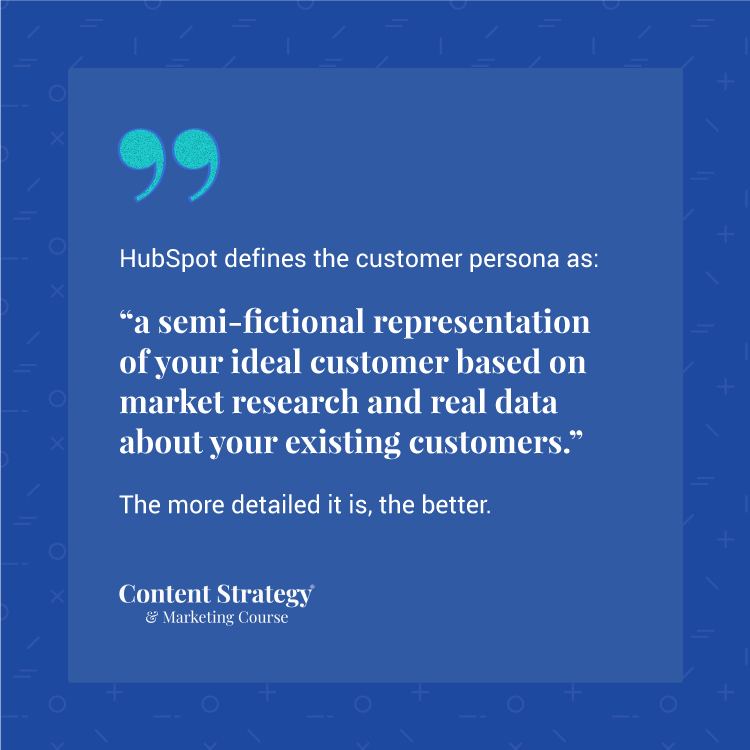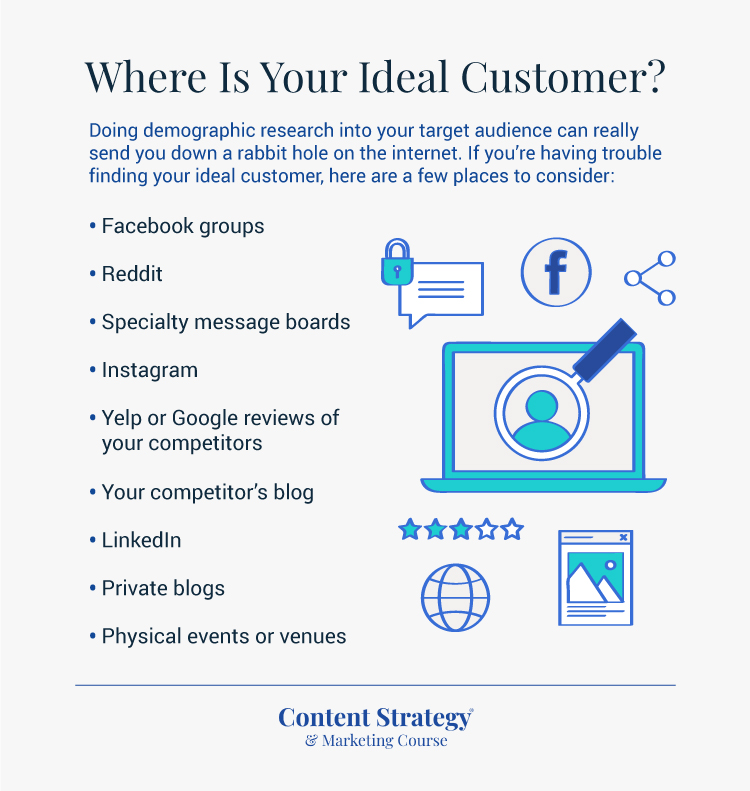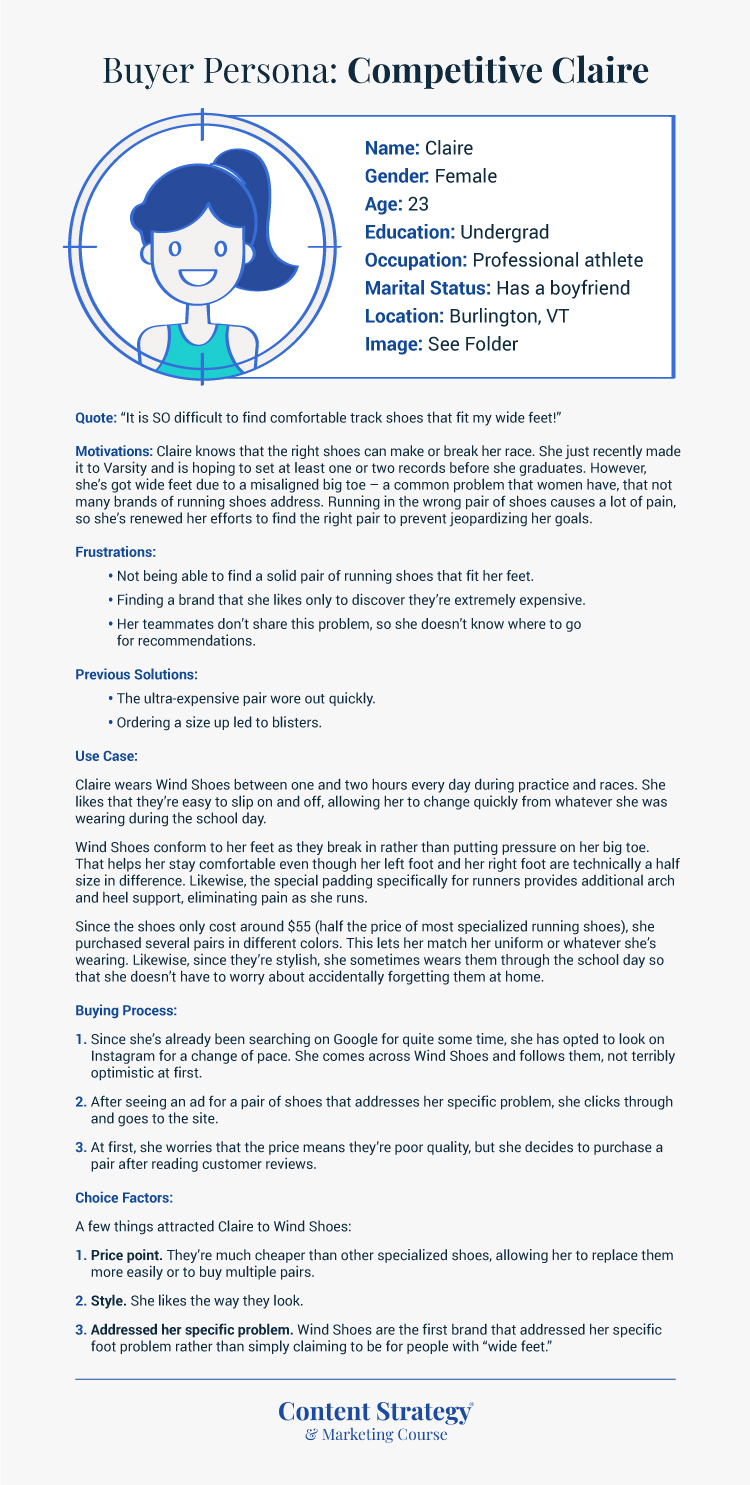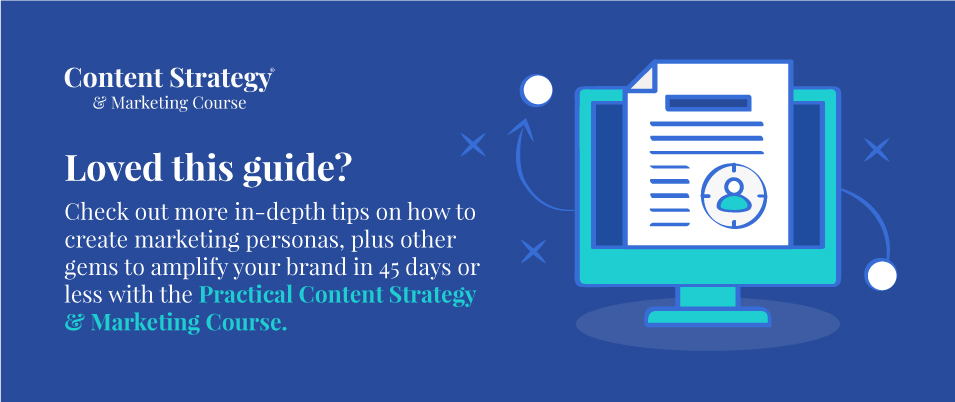Wondering how to position your brand? Not sure who or what you’re targeting in terms in bringing in customers and an audience?
It could be because you don’t have any marketing personas, aka content personas, created.
Personas are a (surprisingly) lesser-known marketing tool that delivers tremendous benefits in your ability to position and convey your brand to consumers.
According to research by Workfront, 71 percent of companies that meet or exceed their revenue goals have documented marketing personas. And HubSpot found that companies using an Ideal Customer Profile (similar to a buyer persona) get 68 percent more sales from their marketing efforts.
Yet, according to a survey by the Buyer Persona Institute, only about 44 percent of businesses use them.
That’s pretty incredible, no?
However, all that really means is you’ll have an edge over your competition when you start using them. You’ll see your content marketing, social media, and customer experience explode in effectiveness. That’s why I’ve put together this guide.
Read on to discover this wonderful secret weapon.

What’s In a Persona?
If you hang out with marketers, you’ll hear the word persona a lot. There are brand personas, buyer personas, writer personas, etc., etc.
But what ARE they?
According to the trusty Merriam-Webster dictionary, the word persona means: “the personality that a person (such as an actor or politician) projects in public.”
When it comes to brands, that’s a deceptively simple statement. Let’s examine it.
Based on this definition, we can surmise a few things. Personas are:
- A perceived image. It’s not who we are, but who people think we are.
- Curated. We might be many things, but we’re projecting a specific side of ourselves right now.
- In-tune with our audience. We wouldn’t project a specific side of ourselves to make people hate us; therefore, we must be doing it to make our audience resonate with us.
- Based on researching our audience or market. To resonate with our audience, we must first know our audience.
- Not our whole personality. Could that mean a brand might have several, each projecting to a different audience? Almost certainly.
So, a persona is a curated image based on market research that a brand projects to connect with its target audience.
In marketing, you’re dealing with two main types of personas: buyer (or customer) personas, and brand personas. We’ll primarily look at buyer and customer personas in this guide, but the advice here works well with other types of personas, too.

Pro Tips for Crafting Credible Customer Personas
A customer persona is a profile of your ideal customer – either the people who you want to buy from you or the people who already do. In either case, here are a few secret tips to maximize your success:
- Build a composite. Don’t study just one customer and create just one persona. Build a portfolio of personas and use them like a composite to understand your customer.
- Use your own users’ feedback. You know how brands often hand out gamified surveys or other things that encourage user feedback? Most of the time it’s market research – specifically personas.
- Use the problem-solution approach. Your personas will help you better connect with your customers, so orient your persona creation towards problems they have that your brand solves.
- Create it in the context of your inbound marketing. Customer personas are your secret weapon in your inbound marketing (your content house, lead magnets, etc.). They’ll provide guidance on how to create compelling, even intoxicating content that attracts your ideal customer.
How to Create a Persona in 6 Steps
To create a customer persona, you’ll need to bring out a couple of personas: your inner sleuth and your inner artist. (See what I did there? XD) ?️♀️???
Then, just follow these six steps to create a customer persona that guides the rest of your marketing efforts! (There’s an example of what an actual one looks like at the end.)
1. Research Your Target Audience
Knowledge is power, so get out that magnifying glass and start peering close at your loyal fans.
If you’re doing any market research or branding activities at all, you’re probably already doing research into your target audience. Get that information out and start drilling down. Here’s what you’re looking for:
- Demographic information. Look for trends. Are most of your customers urbanites in their 20s? Your customer persona probably should be, too.
- Revenue information. Creating personas from data is always smart. Pull info on your largest (and smallest) customers so you’ll have a good sense of what kind of people you’re attracting currently.
- Engagement information. Who’s engaging with your online presence, where, and why?
- Competitor information. While you’re at it, take a look at how competitors approach your target audience. If you’ve already done a competitive analysis, you’ll have much of this information on hand.
- Other interesting patterns. People reveal who they are by what they repetitively do. While single points of data may be interesting, emphasize patterns in behavior or preferences to get the most precise insights into your target audience.

2. Identify Goals and Motivations
Once you’ve got enough preliminary research on your buyer or customer, it’s time to start interrogating the information for insights about how this persona behaves. It’s a good idea to start with what their personal goals are and what motivates them to seek you out.
A great way to do this involves starting with a feature that your product or service offers, then identifying the functional and personal benefits that this feature offers your customers. Follow these further to identify how your product helps a person become their ideal self.
For example, imagine that you own a business that sells sunglasses designed for people who suffer migraines from light sensitivity. You could follow this formula:
- The feature. A special type of tinting reduces exposure to migraine-triggering blue light.
- The functional benefit. The customer has fewer migraines.
- The personal benefit. His or her quality of life improves as they’re not constantly unable to participate in daily life due to migraine attacks.
- The actualization. The customer is able to pursue hobbies or activities they’ve always wanted to be able to do, such as hiking and leading a physically active life.
3. Identify Fears and Frustrations
Identifying a buyer’s fears and frustrations works much the same way as above. However, rather than focusing on a feature of your product or service, look to your entire market – especially your competitors! You’re specifically looking for other solutions that your buyer may have tried that didn’t work out.
This formula looks like:
- Other solutions. What other products is it likely that a customer has tried before finding you?
- Functional failures. Why didn’t those products work out?
- Personal misgivings. What might stop the buyer from investing in yet another solution (yours) that “might not work out?” (Hint: These often reflect pain points in your customer journey!)
- Obstacles to actualization. What ideal self is the buyer unable to attain because they’re not able to find a solution to their problem?

4. Track the Buyer’s Journey
If you’ve been reading my blog, you know I’m a big fan of mapping things onto the customer or buyer journeys. I even do it when I create personas.
Just to refresh: the buyer’s (or customer’s) journey is the set of experiences that an individual has from the moment they become aware of a problem through to the final sale. It includes things like:
- The experience of a problem that your product solves
- Initial search and first contact
- Consideration and further research
- Deciding what strategy, method or approach will solve their problem
- The purchase itself
Tracking the buyer’s journey through the lens of the persona will give you insights that help you target your ideal demographic further down the road. For example, it will tell you things like:
- Where is your ideal customer most likely to first encounter you?
- What they might consider before opting for your (or your competitor’s) solution?
- How does your solution stack up against other methods or approaches?
5. Compile a Use Case Scenario
A use case scenario walks through what it looks like for your customer to actually interact with and use the product or service you offer. Ideally, this scenario gets compiled from the information you identified in steps two, three, and four.
You can think of it as a “day in the life of” a customer who owns your product. It should clearly highlight the product or service’s benefits, but it might also reveal other pain points that you need to solve.
In a use case scenario, you’re answering the following questions:
- What is the customer using the product or service to accomplish?
- What does it look like as she or he uses it (the customer experience)?
- What are some of the features that he or she is most likely to use?
- How is the use of this product making the customer’s life better?
6. Put It All Together
If you’ve completed each of the above steps meticulously, you’ll have front-loaded the actual compilation of your persona. Now, it’s time to bust out that inner artist and put it all together!
Your persona document should include…
- A photograph. We’re visual creatures. A photo helps us visualize the person laid out on paper.
- About section. Choose a name, age, profession, location, and any other pertinent details.
- Motivations and goals section. A lot of persona documents break these up.
- Frustrations. You can frame this in a single quote, as I’ve done in the example below.
- Previous solutions. Identifying previous solutions can also identify pain points.
- Use case. You can use this section to frame the benefits the persona reaps from the product.
- Buying process. Outline how the customer will come across your product.
- Choice factors. Why did the consumer ultimately choose this product? Here’s another section to highlight additional benefits.
What does that look like in action? Below, I’ve used the fictitious brand Wind Shoes, a running shoe brand that specializes in creating products for runners with foot problems and wide feet. Check it out. ↴

Wrap It Up: Create a Persona to Amplify Your Content Marketing
There you have it! You now know how to create a persona, and you’ve got one more tool for your marketing arsenal.
Personas are another way to help you understand and connect with your target audience. They’re effectively a case study and by working through them you can uncover insights into your audience or market that you might not have previously discovered through other forms of market research.
Consider creating your personas around the same time that you do your initial research into your target market and audiences. I recommend creating between two and three personas for each segment. With this compilation, you’ll have a clear view of who you’re marketing to and to what messages they’ll best respond.
They’ll also help you with other marketing efforts, such as advertising or content marketing. It’s easier to craft a message when you know who will be listening.
Loved this guide? Check out more in-depth tips on how to create marketing personas, plus other gems to amplify your brand in 45 days or less with the Practical Content Strategy & Marketing Course.



